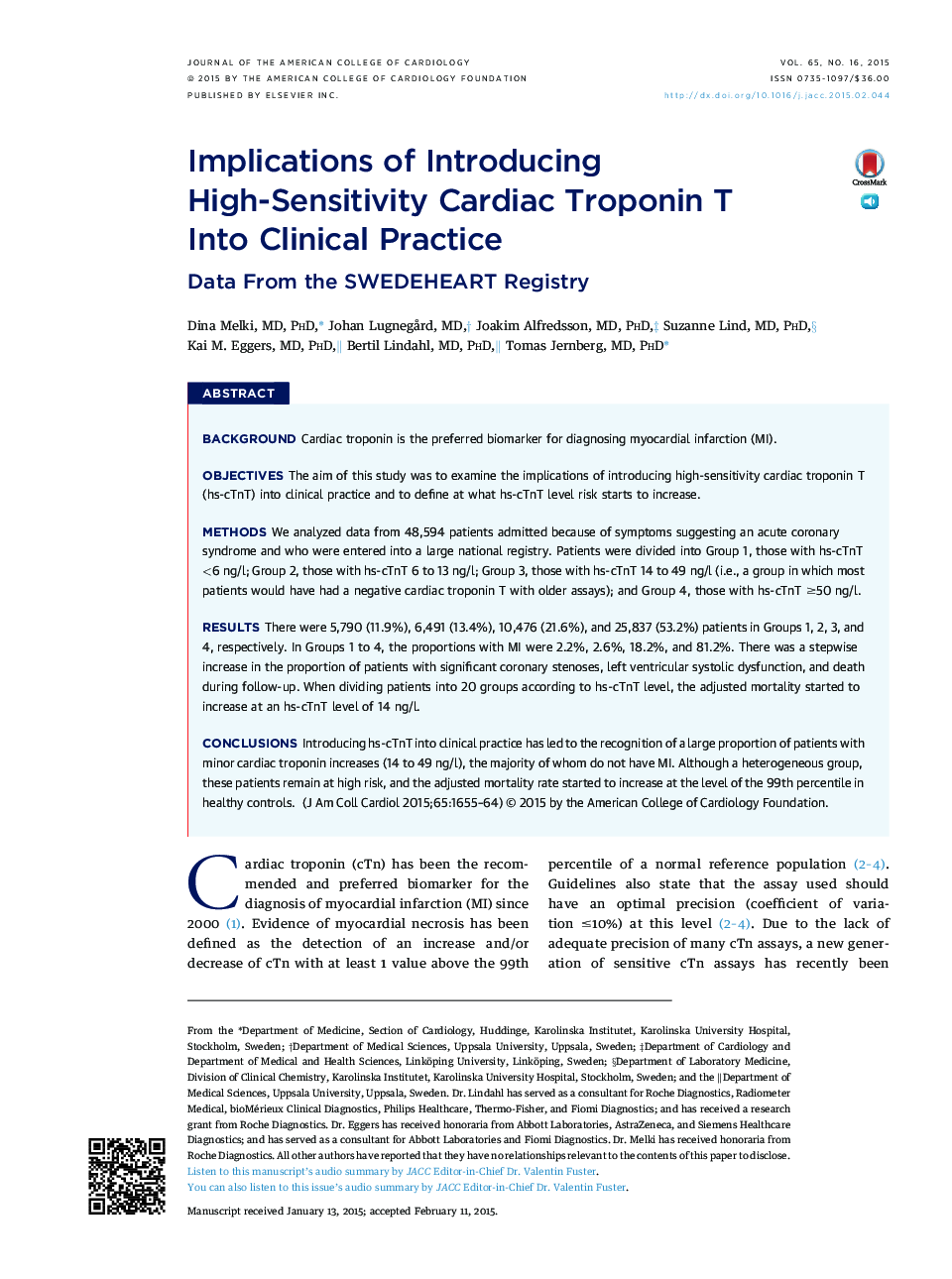| Article ID | Journal | Published Year | Pages | File Type |
|---|---|---|---|---|
| 5982577 | Journal of the American College of Cardiology | 2015 | 10 Pages |
BackgroundCardiac troponin is the preferred biomarker for diagnosing myocardial infarction (MI).ObjectivesThe aim of this study was to examine the implications of introducing high-sensitivity cardiac troponin T (hs-cTnT) into clinical practice and to define at what hs-cTnT level risk starts to increase.MethodsWe analyzed data from 48,594 patients admitted because of symptoms suggesting an acute coronary syndrome and who were entered into a large national registry. Patients were divided into Group 1, those with hs-cTnT <6 ng/l; Group 2, those with hs-cTnT 6 to 13 ng/l; Group 3, those with hs-cTnT 14 to 49 ng/l (i.e., a group in which most patients would have had a negative cardiac troponin T with older assays); and Group 4, those with hs-cTnT â¥50 ng/l.ResultsThere were 5,790 (11.9%), 6,491 (13.4%), 10,476 (21.6%), and 25,837 (53.2%) patients in Groups 1, 2, 3, and 4, respectively. In Groups 1 to 4, the proportions with MI were 2.2%, 2.6%, 18.2%, and 81.2%. There was a stepwise increase in the proportion of patients with significant coronary stenoses, left ventricular systolic dysfunction, and death during follow-up. When dividing patients into 20 groups according to hs-cTnT level, the adjusted mortality started to increase at an hs-cTnT level of 14 ng/l.ConclusionsIntroducing hs-cTnT into clinical practice has led to the recognition of a large proportion of patients with minor cardiac troponin increases (14 to 49 ng/l), the majority of whom do not have MI. Although a heterogeneous group, these patients remain at high risk, and the adjusted mortality rate started to increase at the level of the 99th percentile in healthy controls.
